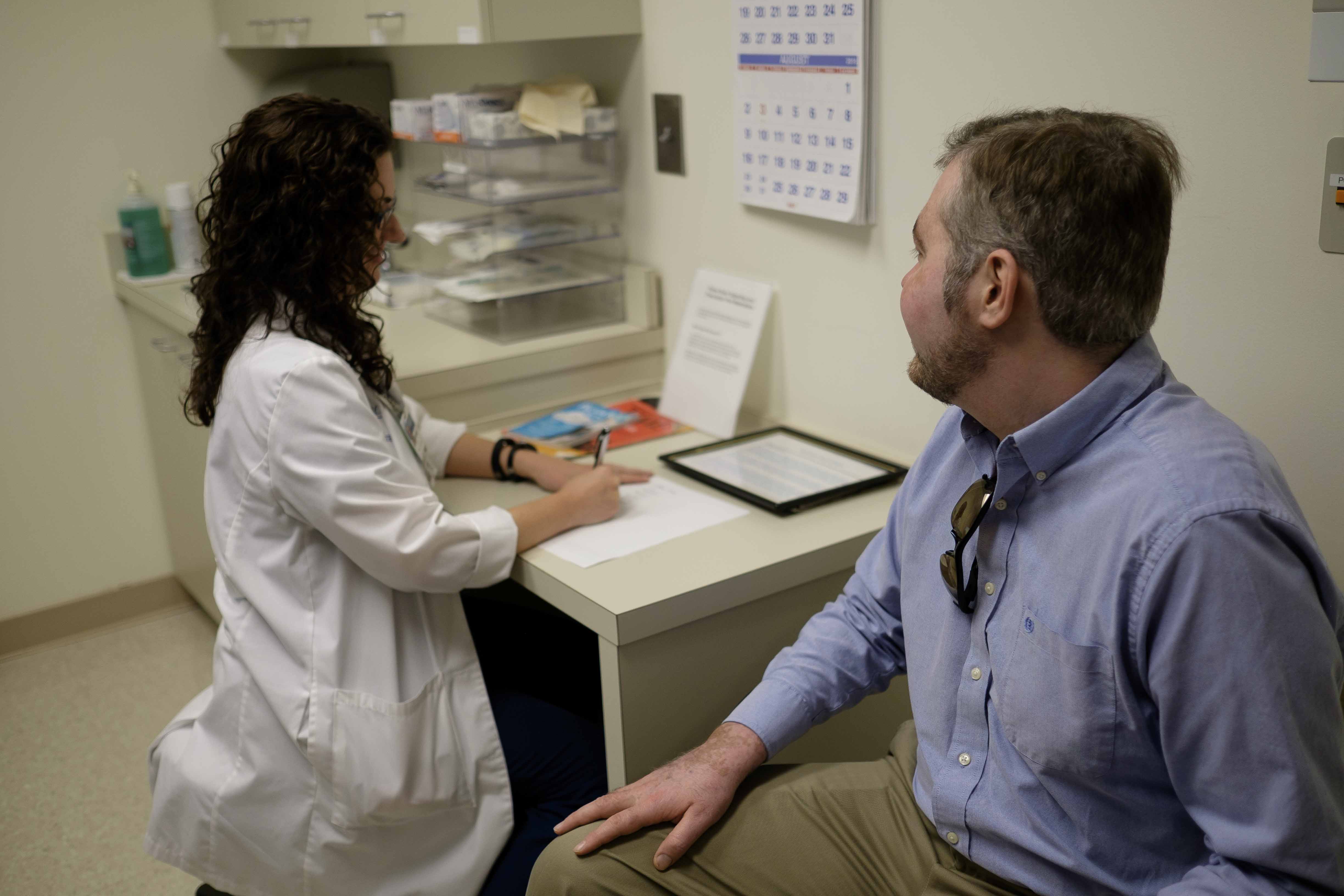Nearly 10 months after his transplant, Chris was back working in the office when he caught a cold from a co-worker. “My donor immune system did what it was supposed to do,” says Chris. “It rose up and fought off the illness, but then it didn’t calm down.”
Thinking his dry, red eyes were just symptoms of a cold, Chris didn’t think of chronic GVHD. Fortunately, his doctor did. During a regular appointment 2 weeks later, his doctor noticed the symptoms and diagnosed it as chronic GVHD.
“So I started on a stronger dose of prednisone. It had a pretty wicked effect on my body. But it did the trick,” Chris says. He only needed treatment for a few weeks, but many people need treatment for months or even years.
Keep an eye out for symptoms
Chronic GVHD of the eyes happens when the donor’s cells attack the surface of your eyes and your tear glands. According to Dr. Sandeep Jain, Professor of Ophthalmology at the University of Illinois, GVHD of the eyes is common for patients who’ve had an allogeneic blood or marrow transplant (BMT). The greatest risk is between 7 months and 2 years after transplant.
Signs to look for include:
- Red and/or swollen eyes
- Discharge
- Eyes feeling itchy, gritty, painful, or sticky
- Sensitivity to light
- Blurry vision
Dr. Jain says, “The best way to lower your risk of developing severe GVHD is to catch it early and to start treatment right away.”
Early diagnosis is key
Dr. Jain recommends routine eye exams before transplant and every 3 months after. If you have any symptoms, get an eye exam right away. Don’t wait for your next appointment. “Eye GVHD can get worse quickly, so early diagnosis and treatment is the most effective and important strategy,” explains Dr. Jain.
If you haven’t had GVHD of the eyes, remember to be alert to any new eye symptoms. Chris’ advice is to, “Identify the symptoms and the root cause early. I initially thought my symptoms were from the cold I had. I didn’t realize it was GVHD until I went to the doctor.”
Treating chronic GVHD of the eyes
For many people, medicated eye drops treat the GVHD. If the GVHD is severe or doesn’t get better, an ophthalmologist (eye specialist) can recommend other treatments. Dr. Jain notes that serum tear eye drops (made from your own blood) can help if the GVHD severely damages the eye surface, and special contact lenses (soft or scleral) can help with severe eye pain.
Overall, chronic GVHD of the eyes is treatable, but it can take time to fully resolve. “With proper treatment,” according to Dr. Jain, “most patients do well, but many need ongoing treatment with some eye drops for years.”
Fortunately, Dr. Jain and other researchers are studying new treatments for GVHD of the eyes. “My laboratory has discovered how neutrophils (a type of blood cell) affect the eye surface,” which has led to clinical trials in the United States. Find a clinical trial for GVHD at jcctp.org.
Coping with symptoms
Even with treatment, GVHD symptoms can still be challenging to manage. Chris used a saline solution to flush out his eyes and clear away mucus. It also changed his appearance. “I’m so used to wearing contacts. It was a change in my image to wear glasses. It was the hardest thing to adjust to,” he said.
One day, before his GVHD was diagnosed, Chris was on the local news doing an interview. “I was sitting right next to the interviewer, but I never looked him directly in the eye. I was ashamed to have him see me like that. My eyes were so red.”
Fortunately, his symptoms cleared after a few weeks of treatment. But many people need treatment for months or years. It can be hard to cope with the symptoms and effects of chronic GVHD for this long. Talking with someone who understands may help. The Be The Match Patient Support Center Peer Connect program can connect you with someone who’s had GVHD of the eyes or a licensed social worker for support.
Questions to ask your doctor
Ask your doctor about your GVHD treatment options. According to Dr. Jain, it’s “best to seek treatment at a center that has experience with GVHD of the eye because some ophthalmologists may think of eye GVHD as just another dry eye.” If this happens, you may not get an effective treatment and your symptoms may get worse.
Here are some questions you may consider asking your doctor:
- Could my symptoms be early signs of chronic GVHD of the eyes?
- How much experience do you have treating chronic GVHD of the eyes?
- Can you refer me to an ophthalmologist who specializes in GVHD?
- What are all of my treatment options?
- Are there clinical trials that could help me?
- How long will I need treatment?
- What else can I do to ease my symptoms?
Support and resources for you
The Be The Match Patient Support Center offers free support and resources to help you learn about and cope with chronic GVHD.
- Contact us for information and support
- Call: 1(888) 999-6743
- Email: patientinfo@nmdp.org
- Talk to someone who’s had GVHD
- Visit: BeTheMatch.org/peerconnect
- Get help coping with GVHD symptoms
- Visit: BeTheMatch.org/counseling
- Find clinical trials to treat GVHD
- Call: 1 (888) 814-8610
- Visit: JCCTP.org
- Learn more about GVHD

